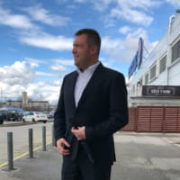

Cloudera Distribution for Hadoop and Redis compete in enterprise data management solutions with a focus on data storage, processing, and management capabilities. Cloudera seems to have the upper hand in managing large datasets and comprehensive security features, while Redis shines in speed and ease of use for real-time applications.
Features: Cloudera Distribution for Hadoop provides tools like Cloudera Manager for managing resources and Impala for fast querying, making it ideal for enterprise-level data management. The platform also includes strong security measures like Sentry for granular access control, enhancing its reliability for sensitive data handling. Redis excels in in-memory data storage, enabling rapid processing and retrieval. Its features include support for multiple data types and efficient data structures, which simplify the management of real-time applications. Redis's publish/subscribe capability enhances communication between system components.
Room for Improvement: Cloudera faces challenges in stability and performance with HBase 1.0, alongside integration complexities, while its documentation and licensing model need enhancement. Additionally, easier Spark with R integration is required. Redis could improve by developing a GUI for ease of interaction, enhancing its data persistence features, and providing more comprehensive scalability documentation. Security features and monitoring tools are also areas where Redis could expand.
Ease of Deployment and Customer Service: Cloudera is often deployed on-premises, offering flexibility in hybrid settings, but requires a substantial setup effort. Its customer service experiences vary, with some users finding it inconsistent. Redis, available in both public and hybrid cloud environments, offers a straightforward deployment process and benefits from effective community support, despite lacking a dedicated customer service infrastructure.
Pricing and ROI: Cloudera Distribution for Hadoop's licensing can be costly, particularly for smaller enterprises, despite delivering value for extensive operations. Its ROI is favorable for large-scale deployments but can be less advantageous for smaller setups. Redis, being open-source, provides a more affordable option with minimal additional costs, though infrastructure expenses still apply. ROI is complex to evaluate for both products, varying with usage scale.
The technical support is quite good and better than IBM.
Data migration and changes to application-side configurations are challenging due to the lack of automatic migration tools in a non-clustered legacy system.
We faced challenges but overcame those challenges successfully.
Redis is fairly stable.
Integrating with Active Directory, managing security, and configuration are the main concerns.
Data persistence and recovery face issues with compatibility across major versions, making upgrades possible but downgrades not active.
It can be deployed on-premises, unlike competitors' cloud-only solutions.
Since we use an open-source version of Redis, we do not experience any setup costs or licensing expenses.
It is scalable, ready for vertical scaling, and very powerful, offering numerous functionalities and configurations for generative AI.
It functions similarly to a foundational building block in a larger system, enabling native integration and high functionality in core data processes.
| Product | Market Share (%) |
|---|---|
| Redis | 8.9% |
| Cloudera Distribution for Hadoop | 2.9% |
| Other | 88.2% |


| Company Size | Count |
|---|---|
| Small Business | 16 |
| Midsize Enterprise | 9 |
| Large Enterprise | 31 |
| Company Size | Count |
|---|---|
| Small Business | 11 |
| Midsize Enterprise | 3 |
| Large Enterprise | 8 |
Redis offers high-speed, in-memory storage, renowned for real-time performance. It supports quick data retrieval and is used commonly in applications like analytics and gaming.
Renowned for real-time performance, Redis delivers high-speed in-memory storage, making it a favorite for applications needing quick data retrieval. Its diverse data structures and caching capabilities support a broad array of use cases, including analytics and gaming. Redis ensures robust scalability with master-slave replication and clustering, while its publish/subscribe pattern renders it reliable for event-driven applications. The solution integrates smoothly with existing systems, minimizing performance tuning needs. Although documentation on scalability and security could be improved, Redis remains cost-effective and stable, commonly utilized in cloud environments. Enhancing integration with cloud services like AWS and Google Cloud and refining GUI may improve usability.
What are the key features of Redis?Redis finds application across industries for tasks like caching to improve application performance and speed, minimizing database load. It enables real-time processing for session storage, push notifications, and analytics. As a messaging platform, Redis handles high traffic and supports replication and clustering for cross-platform scalability.
We monitor all NoSQL Databases reviews to prevent fraudulent reviews and keep review quality high. We do not post reviews by company employees or direct competitors. We validate each review for authenticity via cross-reference with LinkedIn, and personal follow-up with the reviewer when necessary.